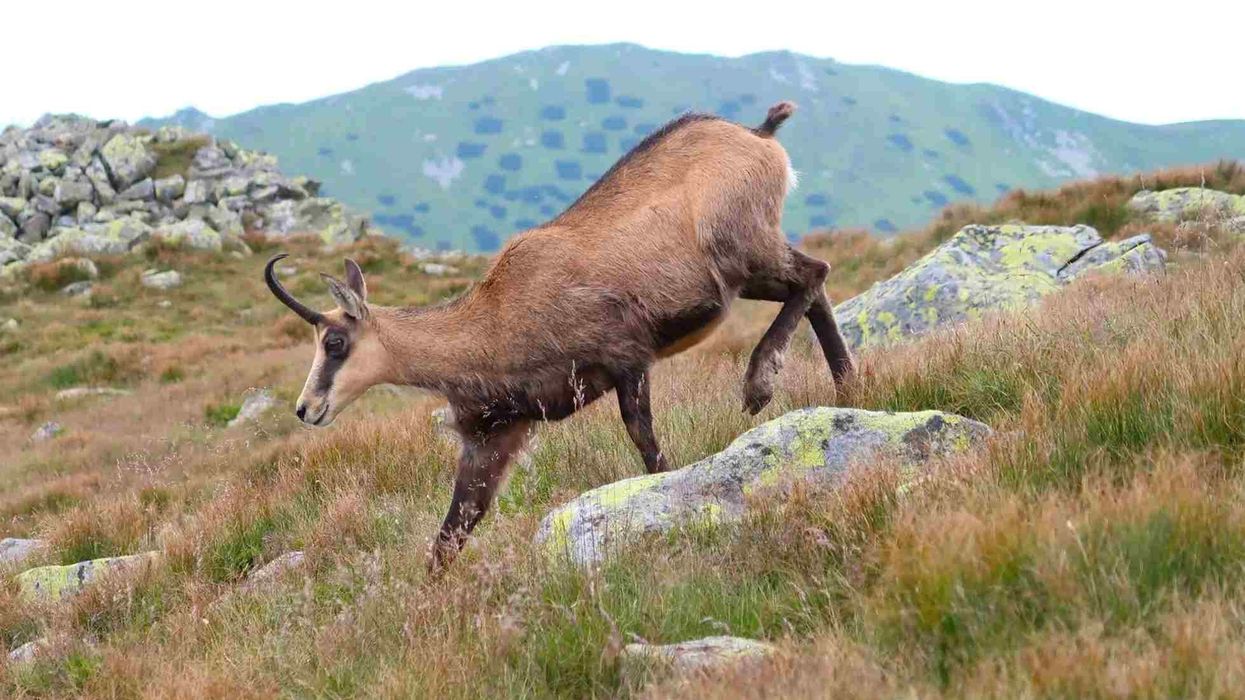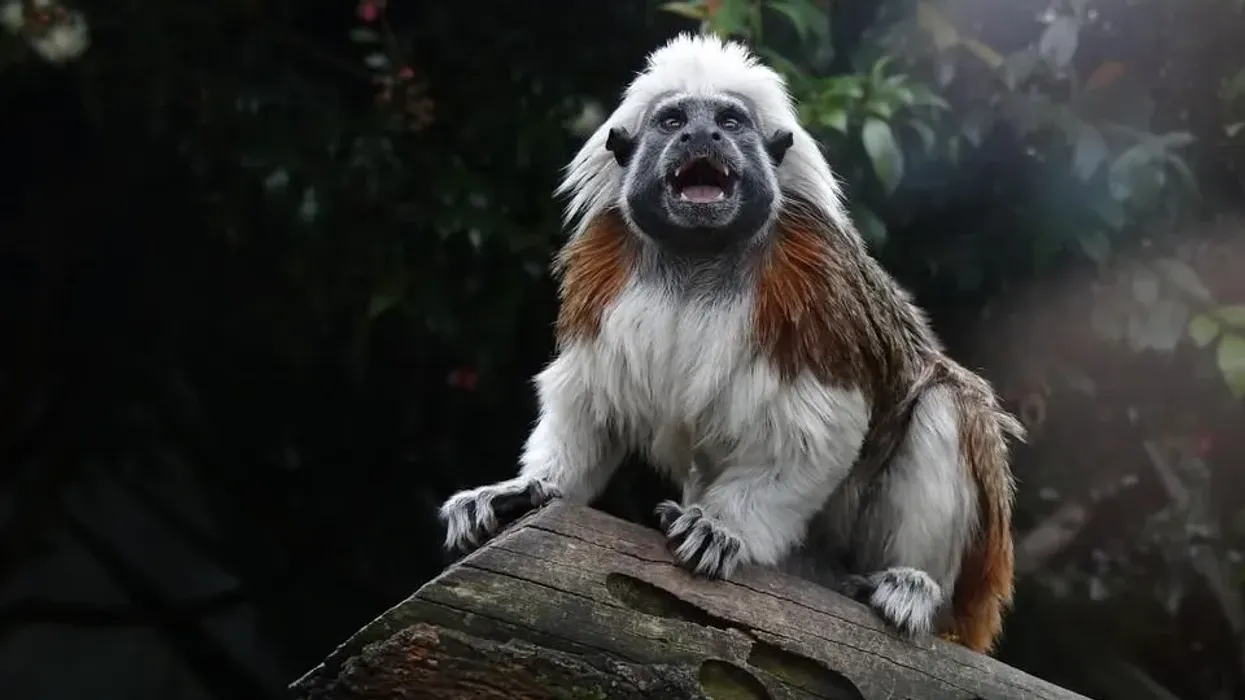Chamois are a rare species with an appearance of a small goat found in the alpine areas of Europe. The plural of chamois is either chamois, chamoix, or chamoises.
A key characteristic of this animal are their black markings on their facial skin and their brown stripes on the skin of their back. Although they are native to Europe and the Middle East, they have also been introduced to New Zealand.
This goat antelope prefers to live in high altitude, rocky areas and is known for its speed, stealth, and alarm calls.
There are two main kinds of chamois species, the Pyrenean chamois and the chamois. However, there are also subspecies of chamois including Anatolian or Turkish chamois, Abruzzo chamois, Carpathian chamois, Chartreuse chamois, Caucasian chamois, Alpine chamois, and Tatra chamois.
The most popular thing a chamois is known for is its skin. Its skin is used to make chamois leather that is made from the skin of chamois and is called shammy leather or chamois leather.
Keep on reading if you want to learn more about a chamois. For facts about other animals, take a look at our articles on draft horse and key deer.
Chamois Interesting Facts
What type of animal is a chamois?
A chamois is a goat antelope.
What class of animal does a chamois belong to?
Chamois belong to the class of Mammalia (mammals).
How many chamois are there in the world?
It has been roughly estimated that there are about 400,000 of them in Europe and about 130,000 of them elsewhere in the world. IUCN states that the population of northern chamois are around 300,000 and the southern chamois are 50,000 mature individuals as of now. However, there aren't any exact numbers.
Where does a chamois live?
They are native to Europe and the Middle East and can be found in the Alps, Turkey, Switzerland, Tatra Mountains, Caucasus, and now in New Zealand.
What is a chamois' habitat?
Chamois live in alpine highlands and meadows, mountains, and rugged rocky terrains.
Who do chamois live with?
Chamois are animals that usually live in herds that can vary in size from four to 80. Female chamois usually stay within the same herd for life.
However, male chamois leave the herd after they reach sexual maturity around three years of age. Male chamois are generally more solitary animals than female chamois and do not stay in the herd unless it is mating season.
How long does a chamois live?
The average lifespan of a chamois is about 14-22 years, depending on the area they are living in. If they are living in captivity, they can live for longer. In the case of living in the wild, their lifespan is less, primarily because of predators.
How do they reproduce?
Mating season for chamois (Rupicapra) is around November to December, during which time males return to their herds and end up in fierce battles in the search for potential mates. The gestation period is 170 days, after which a female chamois gives birth to a young one.
The usual litter size is one, however, a female may sometimes give birth to twins. Females usually deliver in the shade of lichens and grasses. Male babies stay with their mother for their first few years and leave the herd once they are sexually mature.
Chamois are polygamous animals. Sexual maturity is reached at two and a half years for a female and around three years for males.
What is their conservation status?
There are plenty of chamois in the world, and their IUCN status is of Least Concern. Their European population is also very stable.
Chamois Fun Facts
What do chamois look like?
Chamois is a species that is smaller than an average goat. They have a unique black stripe-like facial mark under their eyes and also a stripe running down their spines.
The skin of a chamois is fur which has different shades according to the season. For normal European chamois, the color of their fur is chestnut brown in winters, and pale brown in summers, while for other chamois (Rupicapra pyrenaica), the shade of their fur is reddish-brown, which gets paler in summer.
The latter also has patches on their shoulders which are white in color. Although males are generally a little bigger in size than females, there isn't much difference between either in how they look.
Both possess horns that are vertical above their heads and are curved sharply towards the back. Chamois are known to have black legs and tails.

How cute are they?
Although chamois look more like a goat, this European native is smaller and looks much cuter. However, they may look a little intimidating because of the peculiar shape of their horns and their under-eye black stripes. Nevertheless, the real beauty of the chamois are in their eyes which are generally admired by people.
How do they communicate?
Chamois aren't usually loud animals compared to the rest. They have a feeble bleat generally, even while communicating with their young ones. However, when they sense a dangerous situation, they do let out an alarm call. This alarm sound is more like a hissing sound which is loud enough to be heard at long distances by other chamois.
How big is a chamois?
The average length of a chamois varies between 42–54 in (106-137 cm), while the height of a chamois can be measured to be around 31 in (79 cm) at their shoulders. In comparison, chamois are about the size of goats, just a teeny bit smaller than them.
How fast can a chamois move?
Chamois are known for their speed and movement, especially when they sense danger from a predator. Chamois can run at a speed of up to 32 mph (51 kph) and can take really high jumps of around 7 ft (2 m) and long leaps of around 20 ft (6 m) ahead of them.
How much does a chamois weigh?
Males weigh about 66–132 lb (30-60 kg), whereas females weigh 55–99 lb (25-45 kg). Males are slightly larger in size and weight. We can safely say that sexual dimorphism exists within chamois.
What are their male and female names of the species?
Males and females are both usually referred to as chamois, however, their other names are 'buck' for a male and 'doe' for a female. Males are also called 'gemsbok', which is a German name for them.
What would you call a baby chamois?
A baby chamois is called a 'calf'.
What do they eat?
Chamois are known to be herbivores in nature. Their dietary habits include feeding on various types of vegetation. A chamois will normally eat tree needles, herbs, grasses, and barks.
Are they dangerous?
Chamois are generally not dangerous to humans. These animals generally hide or escape at first sight of humans. They are helped in this regard by their in-built agility. However, it is never advised to go near them as they might just decide to run after you and ram you with their strong horns.
Would they make a good pet?
Although an habitant of the wild, a chamois is a docile animal and can be tamed. They are mostly kept by zoos or people who tend to own exotic livestock.
Did you know...
The skin of a chamois is famous for its softness and warmth. This skin is known for the leather made out of it called 'chamois leather' or 'shammy'. This leather is popular for its sheer and nonabrasive properties. The French are known to have invented this type of leather.
How is chamois pronounced?
The word 'chamois' is pronounced as 'shami' or 'shammy' after the leather that is produced from their skin. At times, there is a distinction between the cloth and the animal in terms of their pronunciation. The leather is always pronounced as 'shami', while the animal is pronounced in the French way like 'shamwa'.
What kind of animal is a chamois?
Chamois are mid-sized goat antelopes.
Here at Kidadl, we have carefully created lots of interesting family-friendly animal facts for everyone to discover! Learn more about some other mammals including mountain goat, or plains zebra.
You can even occupy yourself at home by drawing one on our baby goat coloring pages.










